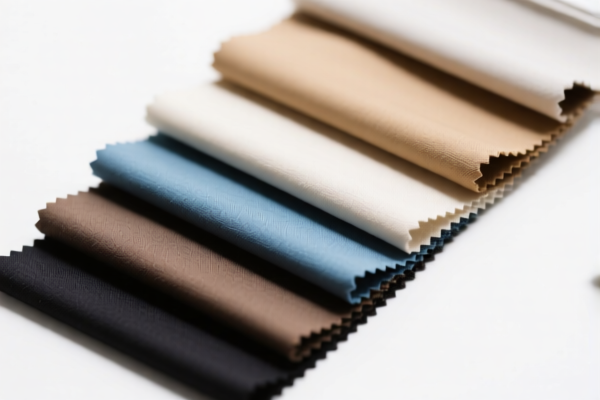| HS Code | Official Doc | Tariff Rate | Origin | Destination | Effective Date |
|---|---|---|---|---|---|
| 3001900190 | Doc | 30.0% | CN | US | 2025-05-12 |




Hair Samples
Hair samples are fragments of human or animal hair, utilized in a diverse range of applications due to their biological composition and unique properties.
Material Composition
Hair is primarily composed of keratin, a fibrous structural protein, alongside trace elements, lipids, water, and pigments (melanin, determining hair color). The hair shaft consists of three layers:
- Cuticle: The outermost protective layer, composed of overlapping scales.
- Cortex: The main body of the hair shaft, containing keratin, melanin, and responsible for strength, texture, and color.
- Medulla: The central core, often absent in fine hair, and its presence and pattern are used in forensic analysis.
Purpose & Applications
The use of hair samples varies significantly depending on the context:
- Forensic Science: A primary application. Hair can be analyzed to identify individuals through DNA analysis (if the root is present), determine drug use, exposure to toxins, nutritional deficiencies, and even provide information about ancestry. Mitochondrial DNA analysis can be performed even without the root.
- Medical Diagnostics: Hair analysis can be used to assess heavy metal toxicity, vitamin and mineral levels, and hormone imbalances. It provides a historical record of exposure over time.
- Cosmetic Research: Hair samples are used to test the efficacy of hair care products, assess hair damage, and study hair growth patterns.
- Environmental Monitoring: Hair can be used as a bioindicator of environmental pollutants.
- Archaeology & Historical Research: Hair samples recovered from archaeological sites provide insights into the diet, health, and genetic characteristics of past populations.
- Genealogy: Hair samples can be used for genetic testing to determine ancestry and familial relationships.
Function (of Hair itself, relevant to sampling)
The function of hair – protection, thermoregulation, sensory input – impacts the characteristics of the sample. For example, hair from the scalp is typically thicker and contains more DNA than hair from the legs. The growth cycle (anagen, catagen, telogen) also influences the sample's characteristics.
Usage Scenarios
- Crime Scenes: Collection of hair found on victims, suspects, or at the scene of a crime.
- Clinical Settings: Collection of hair for toxicology reports or nutritional assessments.
- Research Laboratories: Collection of hair for various scientific studies.
- Archaeological Digs: Recovery of hair from burial sites or ancient artifacts.
- Personal Genetic Testing: Submission of hair samples for ancestry and trait analysis.
Common Types of Samples & Analysis Methods
- Scalp Hair: Most commonly used for DNA analysis due to the presence of the root.
- Pubic Hair: Used in forensic investigations.
- Body Hair: Can be analyzed, but often lacks a root.
- Animal Hair: Used for species identification and in veterinary forensics.
Analysis Methods:
- Microscopic Examination: Used to identify hair type, color, and damage.
- DNA Analysis: The gold standard for individual identification.
- Toxicology Screening: Detects the presence of drugs and toxins.
- Elemental Analysis: Measures the levels of trace elements.
- Isotope Analysis: Provides information about diet and geographic location.
- Mitochondrial DNA Analysis: Used when the hair root is absent.
Based on the provided information, the declared goods "hair samples" fall under the following HS code:
-
3001900190: Glands and other organs for organotherapeutic uses, dried, whether or not powdered; extracts of glands or other organs or of their secretions for organotherapeutic uses; heparin and its salts; other human or animal substances prepared for therapeutic or prophylactic uses, not elsewhere specified or included: Other Other
- 30: Chapter 30 covers Animal, vegetable fats and oils, waxes of animal or vegetable origin, soaps, detergents, cleaning preparations, lubricating oils, waxes, polishes, candles, scented or coated waxes, modelling pastes, dental waxes, sealing waxes, etc. However, this HS code specifically relates to other human or animal substances prepared for therapeutic or prophylactic uses.
- 01: Heading 01 specifies preparations of animal substances.
- 900190: Subheading 900190 further defines "Other Other," indicating that the goods are not specifically classified elsewhere within the chapter and are related to human or animal substances prepared for therapeutic or prophylactic uses.
According to the provided reference material, the HS code options related to 'hair samples' are limited, with only the following 1 found.
Regarding HS code 3001900190, the applicable tax rate is currently 0.0% for basic tariff and 0.0% for additional tariff. However, a 30.0% additional tariff will be applied after April 2, 2025.
Customer Reviews
No reviews yet.